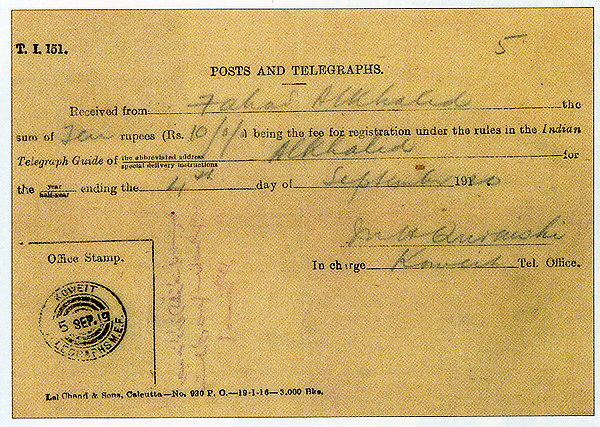The opening of the Indo-European Telegraph Company’s office in Kuwait on December 4, 1916 allowed Kuwaitis back then to directly contact countries in the region as well as India and Great Britain.
The opening of the office allowed the rulers of Kuwait to communicate with the Ottoman Empire and also helped in commerce and hajj correspondences. In his book “The Letter of Kuwait” published in January 2017, author and researcher Khaled Abdulmughni said prior to the opening of the office, Kuwaitis used to travel to Al-Faw in southern Iraq to send their telegraphs.
At the Ottoman archives, telegraphs sent by the then Amir of Kuwait Sheikh Mubarak Al-Sabah to the Ottoman authorities are still preserved, said the researcher, adding that there were also correspondences from businessmen and traders in Kuwait. Another process to send telegraphs prior to the opening of the office was through vessels belonging to the Indo-European Telegraph Company that used to dock at Kuwaiti seaports in 1901. People would submit letters to the ships, which would then transport them to the company’s telegraph office in Al-Faw.
In 1911, the company’s Indian bureau sped up the process of completing infrastructure in Kuwait, Bahrain, Dubai, Boushehr and other areas, allowing for the opening of an office in Kuwait and elsewhere. Shuwaikh was initially chosen as the headquarters for the office, said Abdulmughni, who indicated that the company then decided to include the office as part of the post office in Safat.
In December 1916, the office was opened in the era of Amir Sheikh Jaber Al-Mubarak and it served as a quick and efficient way for Kuwaitis to communicate with the world, bringing prosperity and development to the country. — KUNA











